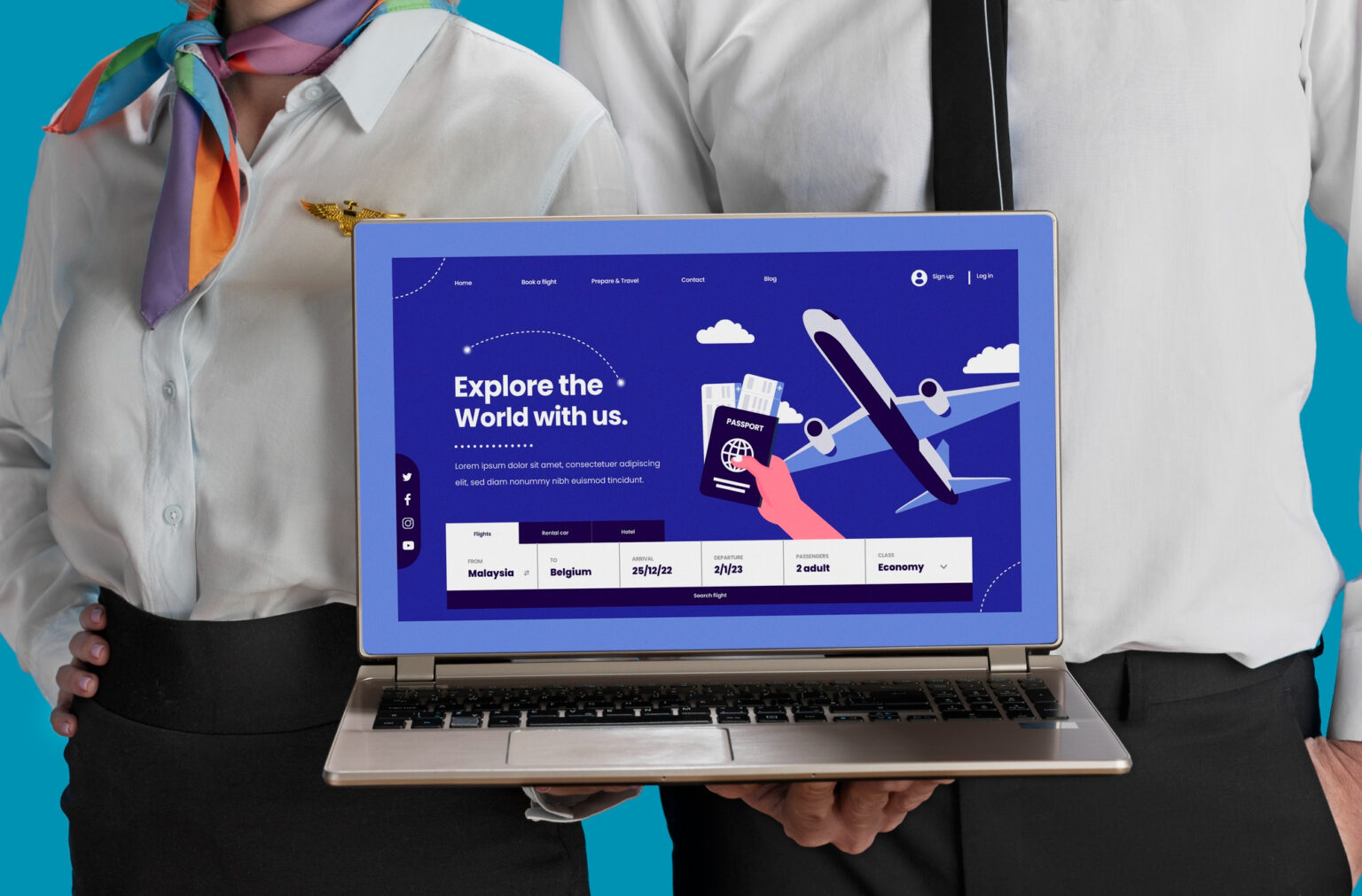Creating a visually appealing website is a fantastic milestone. But a polished design alone won’t bring you visitors — people need to find it. The real challenge is visibility, and for many, the thought of marketing feels daunting because of the cost. Here’s the good news: driving traffic doesn’t always require a large advertising budget.
Promoting your website at no cost is not only possible but also one of the most reliable ways to establish lasting growth. It pushes you to be inventive, build meaningful connections, and lay the groundwork that can later be boosted with paid campaigns. As we move through 2025, the online world is busier than ever, so taking advantage of free promotional techniques is essential for getting noticed.
Key Takeaways
- Content is the backbone: Strong, useful, and engaging content remains the single most powerful way to promote your website for free. Blogging, guest posts, and tutorials help establish expertise and draw organic visitors.
- SEO is a must-have: From keyword targeting to technical optimisation, search engine visibility is crucial. Fast, mobile-friendly websites with well-researched keywords rank better and reach more people.
- Community builds credibility: Active involvement in forums, groups, and social platforms lets you engage directly with potential audiences while naturally directing traffic back to your site.
- Leverage existing platforms: Free channels like email marketing, online directories, and social profiles can greatly expand your reach without ad spend.
- Repurposing multiplies impact: Reformatting a single article into videos, graphics, or podcasts allows you to engage diverse audiences across different platforms.
- Collaboration expands reach: Partnering with creators, businesses, or influencers gives you access to fresh audiences and builds brand trust quickly.
1. Prioritise Search Engine Optimisation (SEO)
SEO underpins free, long-term web traffic. It’s the process of making sure your website ranks high when people search for terms related to your niche. After all, most clicks go to results on the first page of Google — with over 70% of search traffic captured there.
SEO breaks down into three key areas: on-page, off-page, and technical.
On-Page SEO
This is where you have the most control — everything you do directly on your site.
- Keyword research: Use tools like Google Keyword Planner, Ubersuggest, or AnswerThePublic to identify long-tail keywords (3–4 word phrases) that are less competitive but highly targeted.
- Smart placement: Add your chosen keywords to titles, meta descriptions, headers, image alt text, and URL slugs (e.g.,
yourdomain.com/free-website-promotion). - Content quality: Create in-depth, well-researched content that genuinely answers user intent. Comprehensive guides rank better than short, shallow articles.
Off-Page SEO
This focuses on authority signals outside of your site.
- Backlink building: Earn links from reputable sites by guest posting, partnerships, or fixing broken links. Each backlink acts as a “vote of confidence” for your site.
- Social sharing: While not a direct ranking factor, activity on platforms like Twitter or LinkedIn increases exposure and can lead to backlinks.
Technical SEO
This ensures search engines can easily crawl and index your site.
- Page speed: Slow websites frustrate users and harm rankings. Test with Google PageSpeed Insights. Hosting platforms such as Elementor Hosting, powered by Google Cloud, are optimised for speed.
- Mobile-first: With most searches happening on phones, your site must display flawlessly on smaller screens.
- Security: An SSL certificate (
https://) is mandatory for user trust and rankings. - XML sitemaps: Make it easy for search engines to understand your site’s structure.
2. Publish High-Value Blog Content
Blogging remains one of the most effective free marketing tools. A blog positions you as an expert, builds trust, and naturally attracts search traffic.
How to Choose Topics
- Answer real questions: Tools like AlsoAsked and AnswerThePublic reveal common search queries.
- Solve specific problems: Content that directly fixes pain points wins. Instead of vague pieces, create targeted “how-to” or step-by-step guides.
- Spy on competitors: Identify what’s working for them and improve upon it.
Formats That Work Well
- List posts: Easy to read and highly shareable.
- Case studies: Show real-world proof of success.
- How-to guides: Provide detailed, actionable instructions.
- Expert interviews: Add fresh voices and credibility.
- Opinion articles: Share your unique perspective on industry trends.
Promotion Tactics
- Share across all social channels with platform-specific captions.
- Notify your email list each time you publish.
- Repurpose posts into videos, infographics, or podcasts for broader reach.
3. Harness Guest Blogging
Guest blogging allows you to contribute content to another website in your field, earning backlinks and exposure to new audiences.
- Find opportunities: Use search queries like “your topic + write for us” or analyse competitor backlinks with free tools like Ahrefs’ Backlink Checker.
- Perfect your pitch: Personalise your email, identify a content gap, and propose 2–3 original headlines.
- Deliver quality: Write posts that provide clear, actionable advice and fit the host blog’s style.
Always promote published guest posts on your own channels — this builds goodwill with the host site and maximises exposure.
4. Participate in Online Communities
People are already asking questions in forums and groups. By joining the conversation, you can become a trusted voice while gently pointing users to your site.
- Reddit: Find niche subreddits related to your industry.
- Quora: Provide detailed answers to popular questions.
- Facebook Groups: Many active, engaged groups exist around small business, marketing, and other niches.
- Specialist forums: Use Google to uncover niche-specific spaces.
Best Practices
- Provide value first — spend 90% of your time helping, 10% promoting.
- Only link when relevant, framing it as a helpful resource.
- Fill out your profile with a website link for passive traffic.
5. Build an Email List
Unlike social media platforms, your email list belongs to you. It’s one of the most powerful free tools for driving repeat traffic.
How to Collect Emails
- Offer free resources like ebooks, templates, or mini-courses in exchange for sign-ups.
- Place forms in your site’s header, footer, blog posts, or pop-ups.
- Tools like Send by Elementor make capturing leads seamless.
What to Send
- Newsletters with recent blog posts and updates.
- Exclusive offers or discounts.
- Behind-the-scenes stories.
- Feedback surveys.
6. Use Video Marketing
Video remains the most engaging format online. Fortunately, you don’t need professional equipment — your phone and natural light are often enough.
Ideas for Video Content
- Tutorials and how-to demonstrations.
- Product walkthroughs.
- Behind-the-scenes glimpses.
- Short-form Reels or TikToks with quick tips.
Where to Share
- YouTube: Optimise titles and descriptions with keywords.
- TikTok & Instagram Reels: Ideal for short, snappy clips.
- LinkedIn: Great for professional audiences.
- On your website: Embedding videos increases dwell time, boosting SEO.
7. Repurpose Content
One well-crafted article can be transformed into multiple pieces of content.
- Convert a blog into a video, infographic, or podcast.
- Break down webinars into short social media clips.
- Turn a long post into a 5-day email sequence.
This approach saves time, strengthens messaging, and reaches wider audiences across different formats.
8. List Your Website in Directories
Directory listings help with local SEO and improve visibility.
- Google Business Profile: A must for appearing in local searches and maps.
- Industry directories: E.g., Houzz for home design or Avvo for legal professionals.
- General platforms: Yelp, Yellow Pages, and chamber of commerce listings.
Encourage reviews by asking happy customers to share their experiences, and always respond professionally.
9. Collaborate with Others
Working with creators or businesses in complementary fields gives you access to audiences you may not otherwise reach.
- Host webinars or live Q&As together.
- Swap blog posts or newsletters.
- Run bundled offers.
- Try social media “takeovers.”
10. Run Contests or Giveaways
Giveaways are excellent for short-term growth in followers, engagement, and traffic.
- Choose prizes that align with your audience’s interests.
- Set clear goals (email sign-ups, social shares, etc.).
- Promote across all channels.
- Use free tools like Rafflecopter to manage entries.
11. Respond to Journalists with HARO
Help a Reporter Out (HARO) connects journalists with expert sources. By sharing your expertise, you can land high-authority backlinks and media coverage.
- Sign up as a source.
- Scan daily journalist requests.
- Respond quickly with clear, helpful insights.
12. Design Infographics
Infographics make complex topics easy to digest — and highly shareable.
- Use tools like Canva or Piktochart to create them.
- Include branding and your site URL.
- Promote them via blog posts, social platforms, and outreach to other site owners.
13. Optimise Your Social Profiles
Your social media accounts are often the first impression of your brand.
- Add a website link in your bio — tools like Linktree let you showcase multiple links.
- Maintain consistent branding across platforms.
- Use keywords in bios to improve discoverability.
- Regularly post valuable content and engage with your audience.
14. Speak at Online Events
Virtual summits and webinars are great for establishing authority and driving traffic.
- Search for “call for speakers” in your industry.
- Network with event organisers.
- Start small with niche webinars before targeting larger conferences.
15. Offer Free Tools or Resources
A free, practical tool can generate consistent traffic and backlinks. Examples include calculators, templates, or design generators.
Just like Elementor provides free templates to attract users, your free tool should solve a real problem for your audience.
Promoting your website for free doesn’t mean cutting corners — it’s about being resourceful and consistent. From blogging and SEO to email marketing and collaborations, the strategies above can steadily grow your traffic without costing a penny. Remember, it’s not about trying everything at once. Pick a handful that fit your strengths, stay consistent, and build from there.
Frequently Asked Questions
- How long before I see results with free promotion?
Expect social traffic quickly, but SEO-driven growth often takes 3–6 months. - What’s the best starting point for beginners?
Focus on on-page SEO and publishing useful blog content. - Should I join every social platform?
No — pick the one or two where your target audience spends the most time. - How often should I blog?
Consistency is key. One strong article per week (or even per month) beats rushed, low-quality posts. - How do I track success?
Use Google Analytics. Track organic traffic, referrals, bounce rate, and top-performing pages. - Is it possible to succeed with free strategies alone?
Yes — paid ads are accelerators, not essentials. Free strategies can sustain long-term growth. - How do I get readers to share my content?
Create valuable, easy-to-share content and include social share buttons. Sometimes simply asking works wonders. - Is email still relevant in 2025?
Absolutely. It’s still one of the highest-ROI marketing channels. - What if I don’t have time for everything?
Apply the 80/20 rule: focus on strategies with the biggest impact, then repurpose content to save time. - What mistakes should I avoid?
Spamming, neglecting SEO, inconsistent publishing, not setting goals, and quitting too soon.










